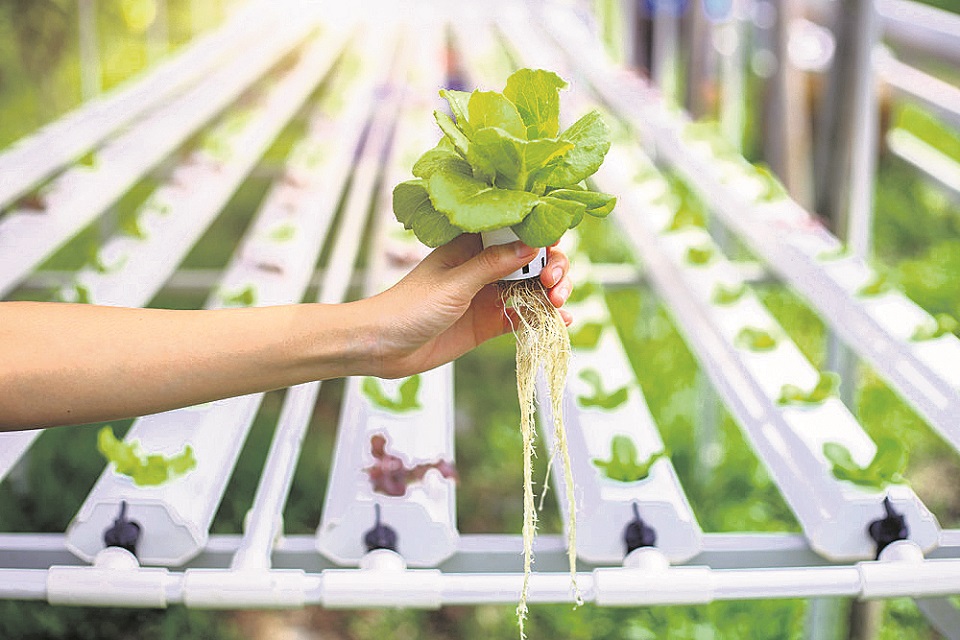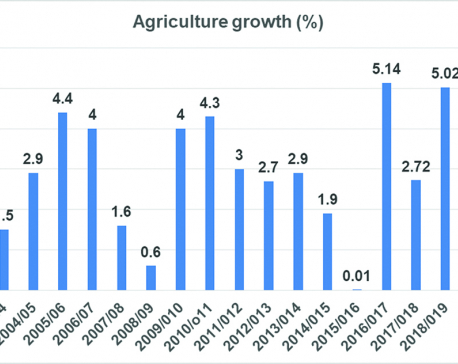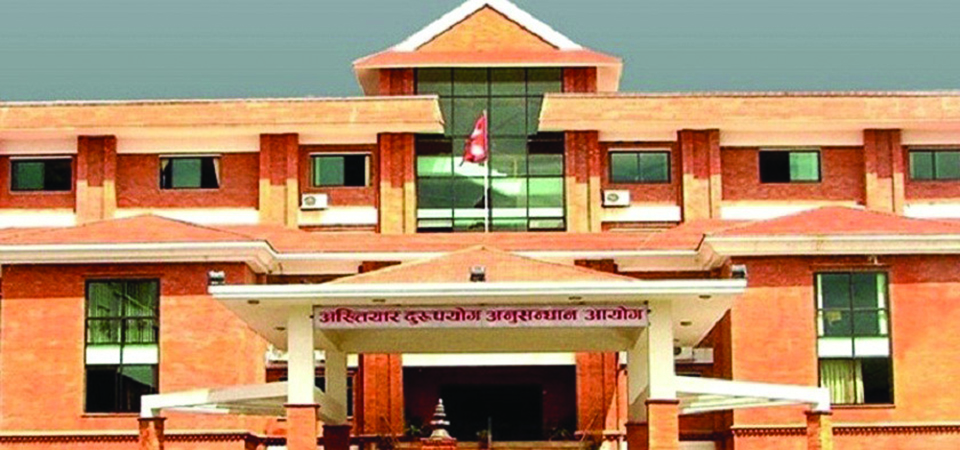
OR

The challenges facing soil-based agriculture led to the invention of soilless agriculture. Soilless cultivation has become possible through the use of hi-tech
As of now, soil is the most common growing media used for growing crops throughout the world as it provides adequate support, nutrition, air and water required for optimum growth of the plants. However, soils are posing some serious limitations mainly in safe food production due to presence of soil-borne diseases, nematodes, drainage and other factors. The challenges facing soil-based agriculture have led to the invention of soilless agriculture. The plant, in fact, does not need soil to grow but for its nutrients. Based on this principle, soilless cultivation has become possible through the use of hi-tech. Soilless farming refers to growing wide range of crops, particularly horticultural crops, in different growing media or substrates other than soil (substrate culture) or in aerated nutrient solution (water culture). In other words, it includes all systems of plant growth either on porous substrates or on pure nutrient solution (NS) instead of the natural soil. Thanks to advancements in soilless agriculture technology.
Many advantages
Soilless agriculture can be performed in controlled environments to address many of the concerns we now have. That is why it is expected to be the future method of farming in many parts of the world. It helps in intensive production of crops under full or partially controlled conditions. It guarantees flexibility and intensification of crop production system in areas with adverse growing conditions. Precise control over the supply of water and nutrients is possible through it. Soilless farming also helps in elimination of soil-borne diseases, reduction labor requirement, and more crops per year etc. Hence, it is becoming very popular in the urban and semi-urban areas. In fact, it has become the substitute for the places where there are abundant and frequent soil borne diseases. At present, it has been widely used for production of different vegetables.
In a traditional soil-based farming, a plant wastes most of its energy developing a huge root system for it has to search far and wide in the soil for its food and water. In soilless cultivation, these are directly available to the plant roots. The plant gets everything it needs in right proportions and at right time. So everything is utilized most efficiently. Apart from these advantages, it is very suitable system of production in the context of limited resources such as land, labor and water.
Soilless systems
There are three soilless production systems commonly used at present. They are known as Hydroponics, Aeroponics and Aquaponics. Hydroponics is a technology for growing plants in nutrient solutions that supply all nutrient elements needed for optimum plant growth with or without the use of an inert medium such as gravel, vermiculite, rockwool, peat moss, sawdust, coir dust, coconut fibre etc. The word hydroponics comes from two Greek words ‘hydro’ meaning water and ‘ponos’ meaning labor. This word was first used in 1929 by Dr Gericke, a California Professor who began to develop what previously had been a laboratory technique into a commercial means of growing plants. The US Army used hydroponic culture to grow fresh food for troops stationed on infertile Pacific islands during the World War II.
Aeroponics is an innovative technique of misting the roots, which are suspended in the air, with hydroponic solution. Plants are supported by tailor made holes in Styrofoam panels. The nutrient solution is sprayed in fine mist form to the suspended roots in calculated cyclic form. Roots are kept properly hydrated and aerated as per the need of the plant. Aeroponics is practiced inside protected structures and is found to be suitable for leafy vegetables like spinach, lettuce etc. It is found to be very efficient technique for space utilization inside protected structures as in some cases almost double number of plants can be grown in aeroponics system. It eliminates tedious chores, increases productivity by up to 20 times, reduces the need for harmful pesticides and demands much less water. A Nepali farmer having some experience of this technique says that a 10-ropani aeroponic greenhouse with extended lighting and climate control will have the same productivity as 200 ropanis of fertile and irrigated fields.
Aquaponics means raising fish and plants in the same water source. The fish actually provide the fertilizer for the plants and the plant roots filter the water for the fish. When fish are introduced to a freshwater source, they give off ammonia through their gills and waste (pee and poop!).Over time, nitrifying bacteria—naturally-occurring microorganisms—begin to grow on all the surface area under the water. This bacteria converts the fish waste into nitrites, and eventually nitrates, which is plant food.
Crops that grow
Although any crop can be grown without soil, the most extensively grown leafy vegetable is lettuce. Fruit crops most suited for this system are tomato and strawberry followed by bell pepper and cucumbers. Many other crops are also being tried in soilless farming with ample dividends. Basically, everything grown in horticulture can be grown in hydroponics. At many places, fodder is also being grown hydroponically.
The government of Nepal has initiated some promotional activities to promote these new techniques of production. From the private sector, some entrepreneurs from mainly Kathmandu have started to produce vegetables and fruits using these techniques with the aim of commercializing agriculture in Nepal. Young entrepreneurs who have started production using these techniques believe that farming and agriculture will be a respected profession in the days to come.
However, production technologies, appropriate structures, required substrates and nutrients for the system, and high initial investment are appearing as challenging issues. It is not simple technique and needs well trained human resources that have the ability to qualify for this type of work. Moreover, most substrates and nutrients are not easily available in Nepal. Initial investment is high. If the governments at all levels focus their programs to address these issues, the soilless farming can trigger commercialization of agriculture. It will be very popular among the young farmers and the country will be self-reliant in most of the agricultural commodities.
You May Like This

Erratic pattern
Agriculture in Nepal is suffering from years of under-investment, limited research, scant inputs and lack of technology and services for... Read More...

Agriculture Knowledge Centre established
SAPTARI, Oct. 4: An Agriculture Knowledge Centre has been established in Rajbiraj district by the Ministry of Land Management, Agriculture... Read More...

All activities of Agriculture and Forestry University, Rampur, halted
RATNANAGAR (Chitwan), August 7: All activities of Agriculture and Forestry University, Rampur, have been halted for the past one week... Read More...


Just In
- Kathmandu continues to top the chart of world’s most polluted city
- JSP Central Executive Committee meeting today
- Ambassador Adhikari presents his letter of credentials to Turkish President Erdoğan
- Bajhang by-election: Construction of Taklakot Road is common election agenda of candidates
- Meeting of Finance Committee being held today to discuss 2025/25 budget
- Stakeholders call for transparency as Beijing pushes for early implementation of BRI projects in Nepal
- Special Court orders judicial custody for Sunil Paudel over illegal wealth acquisition charges
- District Court Rautahat sentences four individuals including Aftab Alam to life imprisonment

















Leave A Comment